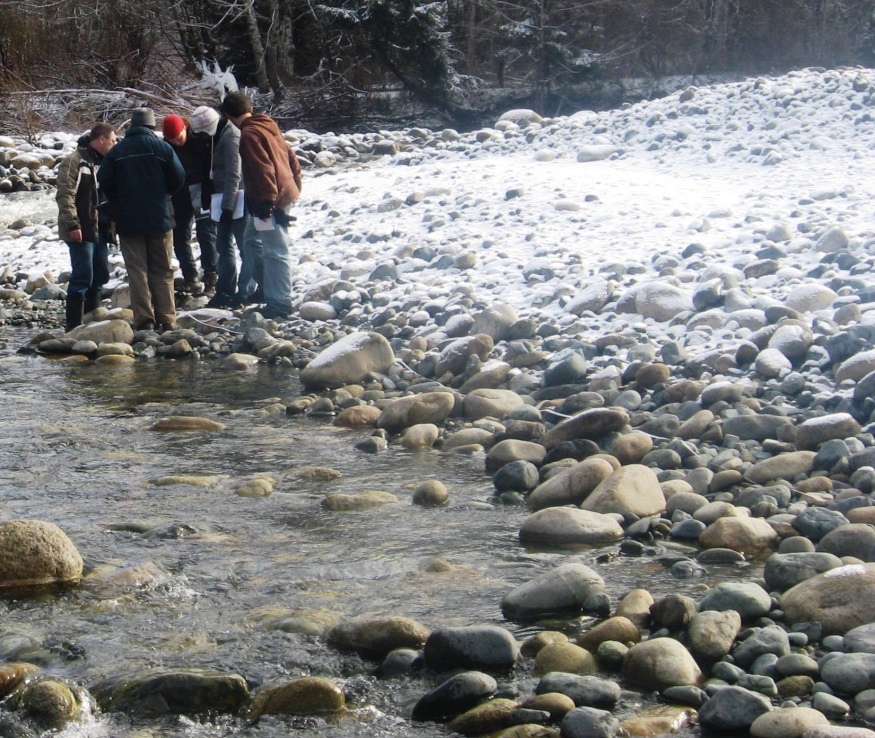1.4 We Study Earth Using the Scientific Method
Science Is a Process
Some people consider science to be a set of facts about nature, but a better description of science is that it’s a means of collecting those facts in as reliable a way as possible. Carl Sagan, an astronomer and author, put it this way:
Science is more than a body of knowledge. It is a way of thinking; a way of skeptically interrogating the universe with a fine understanding of human fallibility. (The Charlie Rose Show, 1996)
The understanding of human fallibility that Sagan refers to is the awareness that human brains take shortcuts in reasoning. Sometimes we’re conscious of these shortcuts, but other times we’re unaware. An example would be the tendency to have more confidence in a fact that is repeated by multiple sources than in a fact stated only once. If you do an Internet search and see the same fact repeated on many websites, it might seem that the fact has been independently confirmed by many people. However, it could simply be that everyone used the same Wikipedia article for their research. The scientific method is a way to reduce the likelihood that errors in reasoning will lead to flawed conclusions.
In its most basic form, the scientific method involves formulating an idea about how the world works—a hypothesis—and then finding a way to test it to see if it’s actually true, and should be accepted.
The term theory is often used in everyday language as a synonym for hypothesis, but that’s not what a scientist means when they talk about a theory. What they’re referring to is a hypothesis that has been tested over and over again, and passed every single test. Saying that an idea is a hypothesis is like suggesting, “Maybe the world works this way.” Saying that an idea is a theory is like concluding, “It’s extremely unlikely that the world works in a way other than this.”
Another term commonly used to describe a scientific idea of great certainty is law. But don’t confuse a law with a theory. Whereas theories are explanations of phenomena, laws are descriptions that apply under specific circumstances. For example, the law of conservation of mass tells us that mass is never lost or gained in physical interactions. An object might break into two, but the total mass of the two parts is the same as the mass of the original. The law doesn’t explain why mass works that way, but it is a reliable rule to use when doing physics calculations.
Theory, Hypothesis, or Law?
Complete this summary of theory, hypothesis, and law by putting the words into the correct blank.
“ , this should work” is how people sometimes express uncertainty about whether they will be successful or not, but this isn’t the correct terminology.
If they mean that they’re trying out an untested idea, it would be more accurate to say, “ , this should work.”
If they’re worried about whether reality will match up with predictions that are based on mathematical descriptions of physical phenomena, what they really mean is, “ , this should work.”
Fill-in-the-blank options:
- Hypothetically
- In theory
- By law
To check your answers, navigate to the below link to view the interactive version of this activity.
An Example of the Scientific Method at Work
Imagine a field trip to the stream shown in Figure 1.6. Notice that the rocks in and along the stream are rounded off rather than having sharp edges. We might hypothesize that the rocks were rounded because as the stream carried them, they crashed into each other and pieces broke off.

If that hypothesis is correct, then the further we go downstream, the rounder and smaller the rocks should be. Going upstream we should find that the rocks are more angular and larger. If we were patient we could also test the hypothesis by marking specific rocks and then checking back to see if those rocks have become smaller and more rounded as they moved downstream.
If the predictions turn out to be correct, we must still be careful about how much certainty to attach to our hypothesis. Although our hypothesis might seem to us to be the only reasonable explanation, someone could argue that we have the mechanism wrong, and the rocks weren’t rounded by bumping into each other.
If our experiment didn’t specifically check for the mechanism (e.g., by looking to see if chips fall off the rocks and the rocks are made smoother) then we would have to acknowledge the possibility. We needn’t abandon the hypothesis as a useful tool for making predictions, but it is necessary to be open to the possibility that other things might be going on. If someone demonstrates conclusively that our hypothesis is wrong, then we have to discard the hypothesis and come up with a better one.
A good hypothesis is testable. Someone might argue that an extraterrestrial organization creates rounded rocks and places them in streams when nobody is looking. There’s no practical way to test this hypothesis to confirm it, and there’s no way to prove it false. Even if we never see aliens at work, we still can’t say they haven’t been, because according to the hypothesis they only work when people aren’t looking. Compare this to our original hypothesis which allows us to make testable predictions such as rocks getting smaller and rounder downstream. Our original hypothesis gives us a way to see how realistic it is, whereas the alien hypothesis gives us no way to know if it makes sense or not.
Lucky Socks Science
Can these hypotheses about lucky socks be tested?
- Hypothesis 1: I won yesterday’s lottery because I was wearing my lucky socks.
- Hypothesis 2: Wearing lucky socks will improve my chances of winning the lottery.

